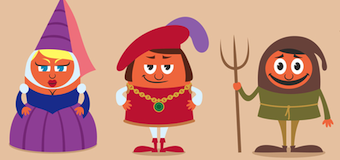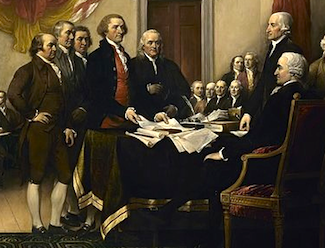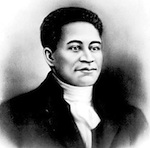Keeping Our History Lessons Meaningful During Role Play
Most social studies teachers are expected to cover very specific content, whether or not it resonates with the students personally or politically. This often leads us to fall back on reenactments as the primary method of giving students an historical “experience.”
While there is value in these activities, it is important to reflect on the purpose of any hands-on lesson. Having students act out historical episodes “just because” is as meaningless as making students memorize names and dates for a test.
I divide on-your-feet history lessons into three broad categories: dramatization, experiential, and real-world application. This post will focus on dramatizations. I will cover experiential and real-world lessons in a later post.
Dramatic missteps
A dramatization is any activity where students take on historical personas or act out specific events in history. There is no question that dramatizations have the potential to be fun. As with all fun activities, however, it is easy for process to overwhelm purpose, and to come away feeling like little of academic value has been accomplished.
In the past, when I have struggled with these lessons, it was for two reasons: the purpose of the activity was not clear to the students, and I choose the role of active director rather than observer, lessening the likelihood that students would dig deeper into the history content.

Result: Less than half the class was directly involved, and I had to orchestrate the entire affair from beginning to end. The classroom “discussion” that followed was dominated by my explanation of the point of the activity and the historical connections. My students practiced no skills and had no better understanding of feudal Europe at the end of the lesson. A three-minute lecture would have accomplished what I took an hour to do.
Reflecting on this lesson, I understood that my primary mistake was assuming that getting students “on their feet” was the point. It is a good idea, when working with adolescents, to keep them physically active and engaged. This physical engagement, however, must be viewed as a vehicle for an academically rigorous lesson.
Success at last

This year, I conducted my first truly successful “living history” lesson. Students first spent a week working in pairs to learn about two prominent figures from the American Revolutionary period. The students had to read about their historical characters and identify their successes, failures, thoughts and motives.

The students were then tasked with getting interviews with each different historical character in the room. Students had to take notes during each interview, and pay special attention to the way their classmates interpreted their adopted personas.

The dual responsibility each student had as both interviewee and interviewer kept everybody engaged, and allowed me to devote most of my energy to supporting the students who struggled most with the activity.
Keeping it meaningful
Bringing history to life is never easy. It is a discipline rooted in documents and ideas that are difficult to parse and feel remote from the day-to-day lives of adolescents. It is important that history teachers strive to make their classes engaging and relevant. However, making a history class fun is not always the same thing as making the subject meaningful or accessible, and the latter should be the ultimate goal.
Students should not come away from a dramatization having done something memorable and learned nothing valuable.”
When creating historical theater activities, we are often inclined to make the experience memorable. This can lead to lessons that students remember in form, but from which they gain little academically. Students should not come away from a dramatization having done something memorable and learned nothing valuable. There should always be a core skill or concept guiding the activity.
Every year I experiment with a variety of ways to get students on their feet and into the history. I have learned as much from my failures as successes, and I know that there exists a whole range of creative possibilities I have yet to really explore.
I hope what I’ve shared here will provide a good starting point for a dialogue about the successes and challenges we have all experienced with dramatizations in our classrooms.




































Hi Aaron,
Really interested in your reflections on dramatisations. I am just setting up my Year 8s with a task to research the life of a individual in medieval times. Have you come up with a meaningful and successful role play activity from this period?
Best,
Mark
Sorry for the delay, Mark. I taught Medieval history for less than two years, and never had a chance to create many good, meaningful lessons with the material. I love the content, but I never had a chance to distill the huge scope of Medieval World History into something accessible to the students. My instinct would be to have students engage in dialogues (in pairs or groups) as particular historical characters or from the perspective of specific social classes (e.g. serfs, clergy and nobility in feudal Europe). The dialogue should follow individual research or reading, and include some kind of writing activity to keep the students accountable as they speak with one another. It could be interesting to allow students to judge the other characters they meet from the perspective of their own character (how might a Christian priest feel about a Muslim merchant and vice versa).
Whatever you do, be prepared for the first time to be a little rough. Adapt, edit and repeat next year. As long as you reflect on the results, clunky new lessons are a great way to learn and develop new curriculum.
Good luck!